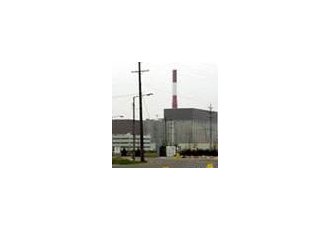
17 avril 2013
Arrêt d’urgence des réacteurs 1 et 2 suite à la perte d’alimentation extérieure en électricité. Les cœurs étant critiques, les systèmes de protection des réacteurs se sont enclenchés. L’urgence a été déclarée.
Lasalle 1 : Première divergence juin 82 - BWR-MARK 2
Lasalle 2 : Première divergence mars 84 - BWR-MARK 2
Available in english only.
La foudre a détruit des isolateurs et isolé le site en courant électrique.
Bien que les 5 groupes électrogènes aient correctement démarré, que les barres de contrôle se soient bien insérées et que les refroidissements des cœurs haute pression se soient mis en route, il y a eu une information de surpression au niveau de la salle du réacteur n° 2.
Cette alerte est survenue suite à la perte de confinement liée à la perte d’alimentation électrique.
Le refroidissement du cœur était déjà en service.
Parallèlement à ce problème, le système de refroidissement d’urgence du cœur (Emergency Core Cooling System - ECCS) s’est enclenché, ainsi que le système de retrait de la chaleur résiduelle (RHR - Residual Heat Removal).
Facility : LASALLE - State : IL - Unit : [1] [2] - RX Type : [1] GE-5,[2] GE-5
Event Date : 04/17/2013 - Event Time : 15:11
Emergency Class : UNUSUAL EVENT 10 CFR Section : 50.72(a) (1) (i) - EMERGENCY DECLARED 50.72(b)(2)(iv)(A) - ECCS INJECTION 50.72(b)(2)(iv)(B) - RPS ACTUATION - CRITICAL 50.72(b)(3)(iv)(A) - VALID SPECIF SYS ACTUATION
Réacteur 1 : Initial PWR 100% - Curent power : 0%
Réacteur 2 : Initial PWR 100% - Curent power : 0%
NOTIFICATION OF UNUSUAL EVENT DECLARED DUE TO LOSS OF OFFSITE POWER FROM A LIGHTNING STRIKE
"LaSalle Unit 1 and LaSalle Unit 2 have both experienced an automatic reactor scram, in conjunction with a loss of offsite power. This was caused by an apparent lightning strike in the main 345kV/138kV switchyard during a thunderstorm. 138kV line 0112 has been inspected in the field, and heavy damage has been noted on the insulators on two of the three phases on a line lightning arrestor line side.
"The plant systems have all responded as expected. All five diesel generators started, and have loaded on to their respective buses as designed. All rods went full in on both units during the respective scrams. HPCS [High Pressure Core Spray] system was started on each unit and automatically aligned for injection for initial level control."
The MSIVs [Main Steam Isolation Valves] are shut on both units with decay heat being removed via the safety relief valves. Suppression pool cooling is in progress.
The licensee will notify the NRC Resident Inspector and has notified the State.
Notified DHS, FEMA, USDA, HHS, DOE, NICC, EPA, and Nuclear SSA via email.
* * * UPDATE FROM DON PUCKETT TO VINCE KLCO AT 2113 EDT ON 4/17/2013 * * *
"In addition to information [previously provided], LaSalle Unit 2 received a high drywell pressure signal [1.77 psig] due to loss of containment cooling from the loss of power. At the time of this high drywell pressure signal, high pressure core spray pump and 2B residual heat removal [RHR] pump was already in operation, the low pressure core spray system and 2A residual heat removal system was secured and [placed] in pull to lock. When the signal was satisfied the ECCS [Emergency Core Cooling Systems] signal was processed but only the 2C RHR pump would have started. In this case, the 2C RHR pump tripped when the signal was received. There is no evidence of reactor coolant leakage. There was no additional ECCS systems discharging into the RCS [Reactor Coolant System]. As [initially stated], level was controlled using High Pressure Core Spray and level control is now being maintained using the Reactor Core Isolation Cooling [RCIC] systems. The 2C RHR pump trip is under investigation.
"Due to the initial loss of offsite power for both Unit 1 and Unit 2 reported at 1511 [CDT], multiple containment isolation valves isolated and closed as expected. Once initial containment isolations were verified, two Unit 2 primary containment vent and purge valves were opened to vent the Unit 2 containment. Once Unit Two containment pressure reached 1.77 [psig], these two vent valves isolated as expected.
"Due to the loss of offsite power, the Station Vent Stack Wide Range Gas Monitor (WRGM) and the Standby Gas Treatment Wide Range Gas Monitor (VGWRGM) also lost power. Manual sampling has been implemented and power is restored to the VGWRGM, however the VGWRGM has not been declared operable yet. Normal radiation levels have been reported from the manual sampling. [This is being reported in accordance with 10CFR50.72(b)(3)(xiii).]"
The licensee notified the NRC Resident Inspector and the State of Illinois.
Notified the R3 IRC, NRR EO(Skeen), IRD MOC (Grant).
* * * UPDATE AT 0057 EDT ON 04/18/13 FROM MIKE LAWRENCE TO S. SANDIN * * *
"After the Unit 2 primary containment vent and purge system isolated on the Unit 2 containment High Pressure signal, Venting of the Unit 1 primary containment was commenced. At 2005 CDT, Unit 1 primary containment pressure reached the Group 2 primary containment isolation system setpoint (1.77 PSIG) causing the primary containment vent and purge valves being used to vent the Unit 1 containment to isolate. Unit 1 primary containment venting was being performed through the Standby Gas Treatment system which is a filtered system.
"In addition to the primary containment isolation signal on high drywell pressure, an ECCS initiation on high drywell pressure also occurred. The ECCS signal resulted in an auto start of the 1C RHR system. The 1B RHR system was already running in suppression pool cooling mode. 1A RHR and LPCS had been secured to prevent overloading the common diesel generator for division 1. The common diesel generator supplies both Unit 1 and Unit 2 division 1 ESF busses."
The licensee informed the NRC Resident Inspector. Notified NRR EO (Skeen), IRD MOC (Grant) and R3IRC (Louden).
https://www.nrc.gov/reading-rm/doc-collections/event-status/event/2013/20130418en.html#en48939